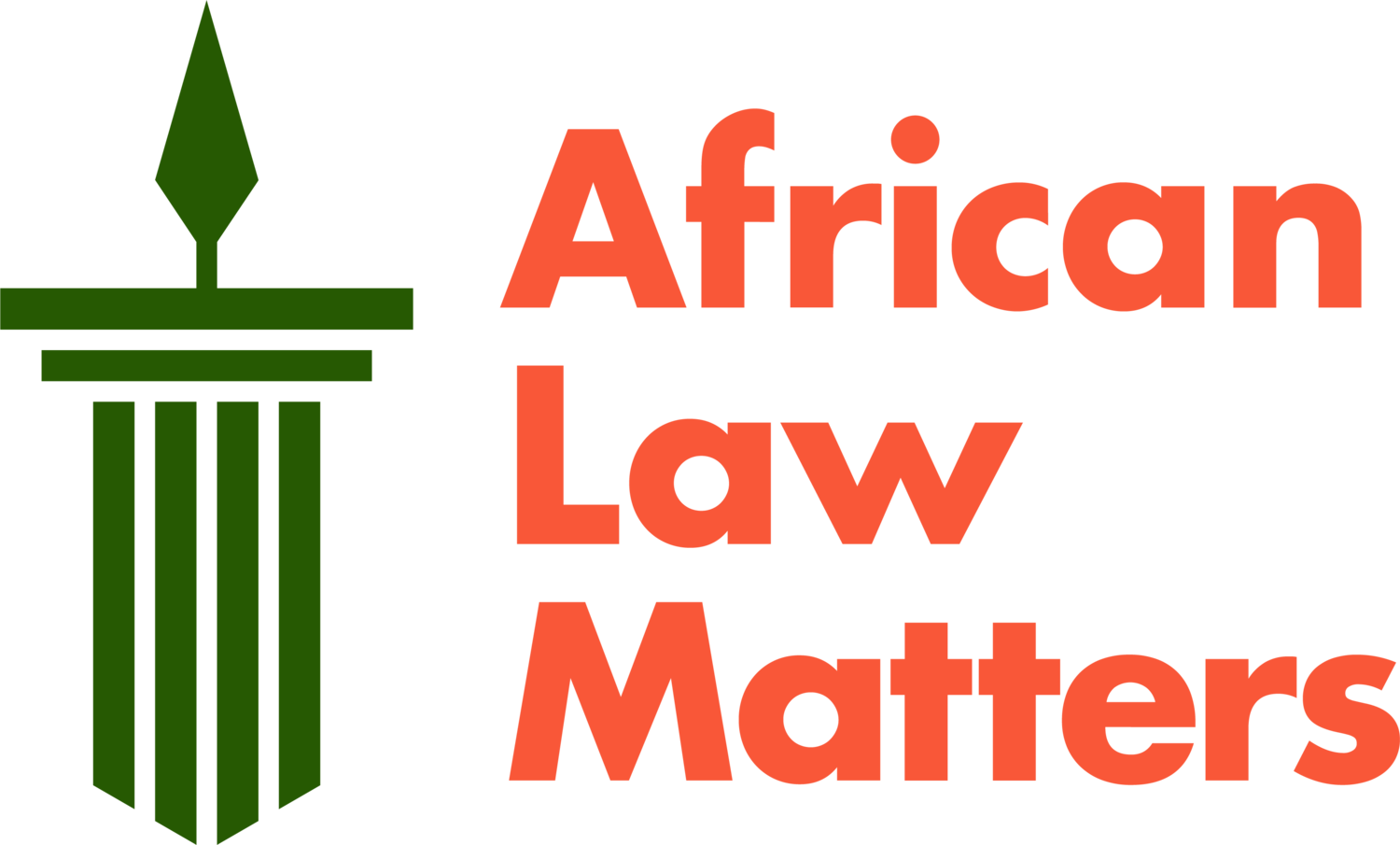A Commentary on the Provisions of the African Union Convention for the Protection and Assistance of Internally Displaced Persons in Africa
The lack of legally binding regional and international institutional frameworks for the prevention of internal displacement and the protection of internally displaced persons (IDPs) led to the adoption on 23 October 2009, and entry into force on 6 December 2012, of the African Union Convention for the Protection and Assistance of Internally Displaced Persons (Kampala Convention).
The Kampala Convention was adopted in the context of the 1998 United Nations (UN) Guiding Principles on Internal Displacement (Guiding Principles) and applies those Guiding Principles to the specific situation of internal displacement in Africa. It also refers to other relevant African Union (AU) international human rights, and humanitarian law instruments by combining the principles they enshrine into one treaty.
The Convention is the first-ever binding, comprehensive instrument governing internal displacement that captures all causes and stages of internal displacement. Moreover, it adopts an African approach to the problem of internal displacement. As a contribution to the Guiding Principles, the Kampala Convention provides an expanded list of acts that may cause arbitrary displacement and also extends the definition of displacement to account for a wide range of other factors resulting in displacement, including natural or human-made disasters and large-scale development projects.
There is a need to clarify and improve the understanding of the provisions of the Kampala Convention through commentaries. A commentary explains legal terms, identifies important legal authorities, and clarifies and interprets legal concepts and issues. Therefore, a commentary would provide a systematic legal and interdisciplinary study of the normative content of each provision of the Kampala Convention.
In this blog piece, I explain why a commentary on the provisions of the Kampala Convention is necessary and elucidate its benefits for African member states and other actors accountable for implementing it.
Necessity of a Commentary
Institutionally, the machinery for monitoring and reviewing the implementation of the Kampala Convention includes the Conference of State Parties, the African Peer Review Mechanism (APRM), and the African Commission on Human and Peoples’ Rights (African Commission). Since the Kampala Convention is a human rights instrument over which the African Court on Human and Peoples’ Rights (African Court) has jurisdiction, matters pertaining to it can also be brought before the court.
While the above institutions support states in fulfilling the objectives of the Kampala Convention, no general comments have been developed by the African Commission on any of its provisions. At the regional level, there have not been any judicial pronouncements by the African Court and African Commission on the Convention.
“It is for these reasons that a comprehensive commentary on the provisions of the Kampala Convention is necessary.”
Under the Kampala Convention, States Parties are obligated to indicate the legislative and other measures that they have taken to give effect to the Kampala Convention when presenting their periodic reports to the African Commission and the APRM. However, States Parties have often not adhered to this obligation. Under the African Peer Review country reports, no state has reported on measures taken to give effect to the Kampala Convention. Only the Republic of Cameroon, Angola, and Burkina Faso have submitted their initial report on the Kampala Convention to the African Commission.
The state reporting procedure also creates a forum for states and civil society organisations (CSOs) to engage in constructive dialogue on the protection and assistance of IDPs and the provision of durable solutions for them in Africa. CSOs can present shadow reports that complement, clarify, or question what states have achieved.
The African Commission’s Special Rapporteur on Refugees, Asylum Seekers and Internally Displaced Persons (Special Rapporteur) plays a huge role in ensuring that states effectively implement the Kampala Convention through its mandate. This includes assisting states in developing appropriate policies, regulations, and laws for the protection of IDPs, and engaging in meaningful dialogue with states, National Human Rights Institutions, and CSOs. The Special Rapporteur also presents reports on situations of IDPs at every session of the Commission.
While efforts have been made by several states to adopt domestic legislation or policies to implement the Kampala Convention, more still needs to be done by states to translate the Kampala Convention into practice.
In 2018, the AU Assembly adopted a Model Law to facilitate the incorporation of the Kampala Convention into national frameworks. The Model Law consists of 14 chapters that detail the Convention’s provisions and how all crucial aspects of responses to displacement should be regulated. Nigeria consulted the Model Law in the development of its proposed IDP Bill.
However, the Model Law has been subject to criticism. Article 7 of the Model Law emphasises the protection of IDPs but fails to mention issues of assistance to IDPs, which is one of the main pillars of the Kampala Convention. The Model Law also fails to ensure that in situations of evacuation, evacuation sites should have proper accommodation, and it fails to state that during evacuation, families should not be separated.
It is for these reasons that a comprehensive commentary on the provisions of the Kampala Convention is necessary.
Benefits of a Commentary
Firstly, a commentary will provide a systematic interpretation of the Kampala Convention’s provisions to clarify its intent and implications in enhancing the protection, assistance, and long-term solutions provided to IDPs in Africa. It would trace the legal, political, economic foundations and justifications of the Kampala Convention and its provisions. It would also support the AU Model Law, facilitate the adoption of measures aimed at preventing and ending internal displacements by eradicating their root causes, protecting and assisting IDPs, and initiating debates, discussions, and interest in these matters on the continent. It presents an opportunity to add to academic and non-academic works focused on understanding the fundamental elements of the Kampala Convention.
Secondly, a commentary on the provisions of the Kampala Convention can support and guide the work of the Conference of States Parties, CSOs, APRM, and the African Commission. These are the mechanisms that monitor the implementation of the Convention and ensure that IDPs in Africa are protected and assisted, and that there are favourable conditions for the development of durable solutions for them. This will improve the engagement between the African Commission, States Parties, CSOs, academia, host communities and states, and other actors, such as non-state actors, who have obligations under the Kampala Convention.
Lastly, a commentary on the provisions of the Kampala Convention would analyse normative standards developed by the AU and its member states, as well as institutional efforts made by the African Commission and AU states to improve the protection and assistance of IDPs in Africa. Therefore, such a commentary on the provisions of the Kampala Convention could better guide states, the actors vested with the primary responsibility to prevent internal displacement and assist IDPs, in the implementation of the Kampala Convention, especially since research shows that states still need clarity to effectively understand the Kampala Convention.
In this regard, a commentary can provide clarity on the content of the Kampala Convention’s provisions, enabling states to effectively understand the nature and scope of measures they are required to adopt to protect and assist IDPs under the Convention. It will guide states in any future legislative amendments or reforms and also assist those in the process of adopting legislative or other measures by helping them to fulfil their obligations effectively.
In conclusion, states, the African Commission, international organisations, policymakers, and judges will be better able to fulfil their duty to protect and assist IDPs if they understand the normative content of the protections provided by the Kampala Convention.


